November 09, 2022
Pedaling On: Celebrating One Year of ITDP’s Cycling Cities Campaign
 It has been one year since ITDP unveiled Cycling Cities at the UNFCCC Conference (COP26) in Glasgow, and we are proud to say that this bold global campaign has made significant progress since it was launched.
It has been one year since ITDP unveiled Cycling Cities at the UNFCCC Conference (COP26) in Glasgow, and we are proud to say that this bold global campaign has made significant progress since it was launched.
By 2025, Cycling Cities aims to influence 250 cities to design, adopt, and implement more cycling-friendly plans.
Now, in the midst of COP27 this November, we want to recognize the achievements that our partners and cohort cities have made over the past year to move us closer to the goal of having 25 million more people living near safe cycle lanes by 2025. While the road ahead is still long, Cycling Cities has helped make clear the environmental, social, and economic benefits of cycling — and it has never been more urgent for more cities and governments to join our growing movement.
Thanks to the efforts of our 28 cohort cities and more than 40 partners working at the local, regional, and international levels, the campaign has helped to establish cycling as an essential transport mode, a viable solution for reducing greenhouse gas emissions, and a means for creating more livable and equitable spaces all around the world. The COVID-19 pandemic touched off a remarkable boom in cycling in 2020 as people turned to it as more than just recreation, but also as a reliable means of transport, goods and services delivery, employment, and more. From Mexico City to Addis Ababa, our Cycling Cities responded to the pandemic by implementing emergency measures for safe cycle lanes and open streets initiatives that responded to the public demand.
Now, more than two years later, these cities recognize the importance of having robust cycling infrastructure as a core part of their transport systems, and they continue to pave the way for policies that promote cycling, improve pedestrian access, and reclaim urban spaces from cars. The Cycling Cities campaign ensures that these cities and partners have a platform to exchange knowledge, share best practices, collect data, and build upon other’s experiences beyond the pandemic, so that others around the world can also be inspired.
A Look Back
In its inaugural year, the campaign has organized high-profile cycling events, released influential research reports, and convened our partners and cohort cities in deep-dive conversations to share insights and provide peer-to-peer support. Some highlights include:
- Riding into the New Urban Agenda Event: Ahead of the UN General Assembly’s High-Level meeting in April 2022, UN-Habitat, ITDP and key partners hosted Riding into a New Urban Agenda, a bike ride and panel discussion event that called attention to cycling as an essential transportation mode in the Agenda’s implementation. View video coverage of the event.
- Making the Economic Case for Cycling Report: This report published in June 2022 demonstrates how investments in cycling infrastructure can unlock key economic and social benefits for local economies around the world. Cycling Cities hosted a webinar and Twitter Space conversation to promote the research and findings.
- Protected Cycle Lanes Protect the Climate Report: Released in October 2022, this study was developed with support from the FIA Foundation and provides the first empirical evidence directly linking bicycle infrastructure to greenhouse gas emissions reductions in middle-income cities. Watch a webinar about the report and read coverage of it in Fast Company.
- Best Practices Conversation Series: The campaign hosted a series of discussion-based virtual meetings with cohort cities meant to exchange knowledge and ideas about specific topics of interest. The series included presentations on best practice projects from: Bogotá and New Town Kolkata on inclusive cycling; Mexico City on bikeshare systems; Glasgow on planning cycle networks; Jakarta on building support for and integrating cycling with public transport; and from Kisumu on implementing cycle projects in line with a city-level sustainable urban mobility plan.
- Mastering the Cycling City Course: This self-guided course for city planners, practitioners, and advocates brings together context, guidance, and case studies for improving urban cycling. The course is available to Cycling Cities members and pledge-signers only – access it here.
Looking towards 2023, the Cycling Cities campaign will continue to serve as a resource for cities as they undertake ambitious infrastructure and street redesign projects and implement programs to bring more people closer to cycling. We aim to do this by hosting more events and creating channels for cities to network and learn from one other, all the while unlocking opportunities for sustainable financing for cycle projects and on-the-ground technical support.
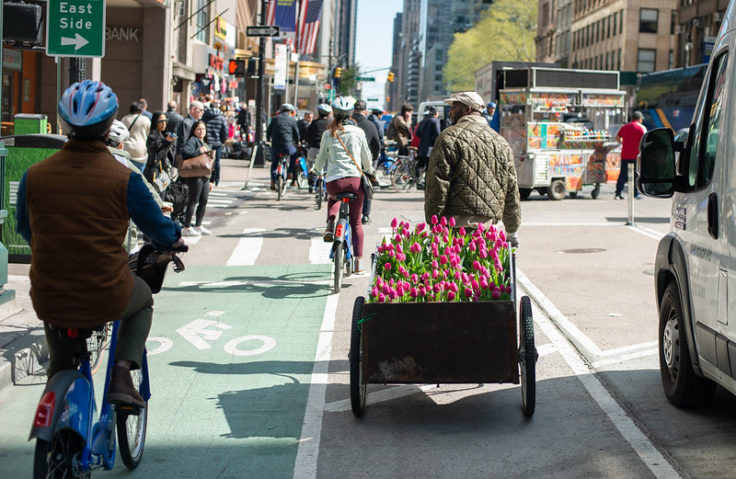
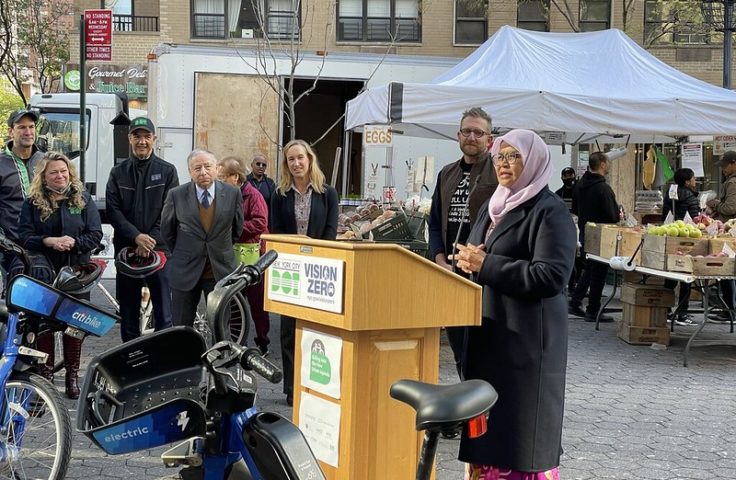
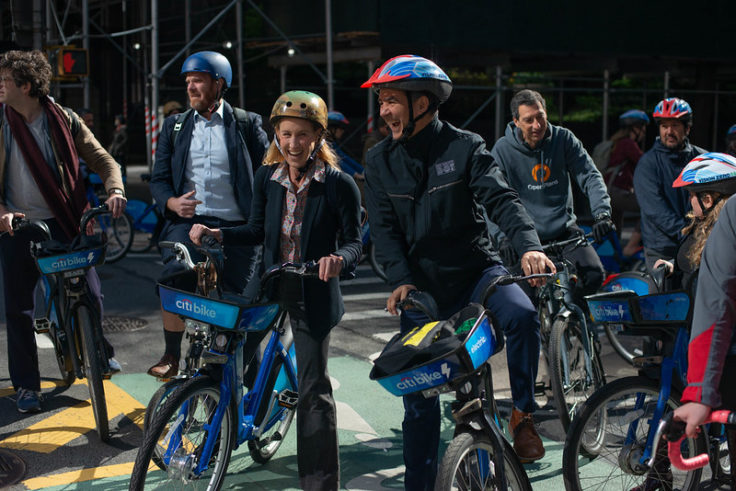
Highlights from Cohort Cities
The campaign’s cohort cities have all undertaken impressive street redesigns, cycling policies, and other reforms to place a spotlight on cycling over the past year. As of 2022, our 28 cohort cities have a combined total of 4,300 kilometers of safe cycle lanes serving more than 9 million people and, in line with the goals of the campaign, aim to have 4,000 more kilometers of safe cycle lanes serving an additional 25 million people by 2025.
Some amazing progress has been made by the cohort in every corner of the world:
- In Indonesia, the historic capital of Jakarta has implemented 299 kilometers of new cycle lanes, 73 kilometers of which are fully protected. This achievement is 50% more than Jakarta’s initial 2022 target for new kilometers of cycle lanes.
- Cairo, Egypt, is now home to a new bikeshare program, with plans for 500 bikeshare bicycles and 26 stations. Egypt’s Prime Minister and Cairo’s Mayor attended the Cairo Bike launch event in early October, signaling support for cycling ahead of the region’s hosting the 2022 United Nations Climate Change Conference (COP27).
- In Mexico, the city of Zapopan unveiled its “Bike Parking Everywhere” project, which is already living up to its title with a tremendous 400 bicycle racks installed citywide in the last year.
- The city of New Town Kolkata in India has focused on encouraging more women and girls to cycle, hosting women-only cycling rallies and training camps to make cycling safer and more accessible. New Town Kolkata’s public bikeshare system now has nearly 1,000 bicycles and the city installed four kilometers of protected cycle lanes this year.
- Rio de Janeiro, Brazil, built more than 24 kilometers of protected cycle lanes near 22 public transport stations along key roads to better connect local public transit systems with the cycling network and allow for more integrated, car-free trips.
- The city of Glasgow, Scotland organized cycling skill-building programs as a way to encourage more school-aged girls to participate in and build confidence in cycling, along with the continued implementation of protected cycle lanes along major thoroughfares.

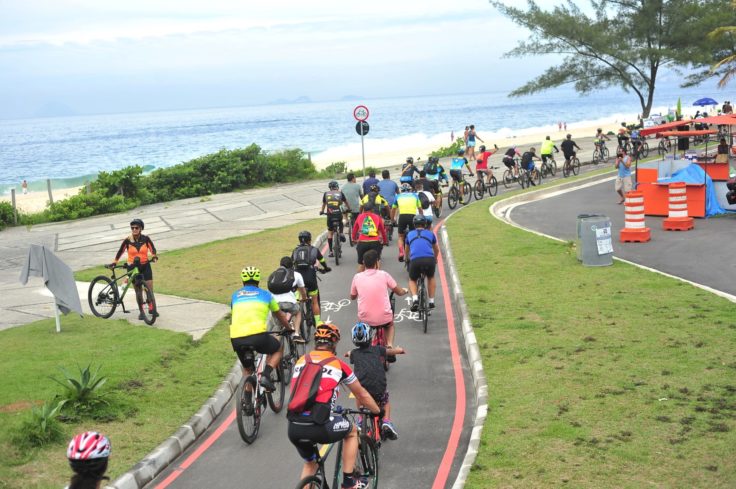
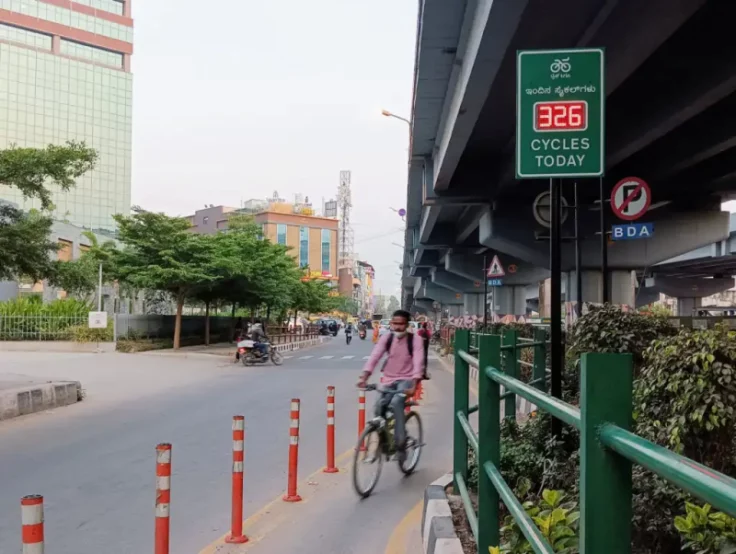
The Road Ahead
There is still a great deal to be done for cycling infrastructure and policy. More cities, decision-makers, and transport funders need to think strategically about ways in which they can help make cycling more inclusive, accessible, and commonplace for all types of communities. For example, we have seen how a global gender gap has allowed men to benefit disproportionately from cycling, and that a target effort is needed to ensure cycling infrastructure supports women’s mobility needs as well. There also needs to be a more strategic integration of cycling with public transit to ensure that multi-modal trips can realistically replace the ease and comfort of private car trips. Expanding access to cycling with more investment in city-run bikeshare systems is critical as well, along with promoting road safety by lowering speed limits and physically separating cyclists and pedestrians from vehicles. Many in the Cycling Cities cohort have been working on projects and policies to address these issues, and will continue to learn from each other to deliver more equitable, comfortable, and enjoyable cycling environments.
On a global scale, as we noted during the initial launch of Cycling Cities, there is an urgent imperative to reduce emissions from urban transportation — one that requires cities and governments worldwide to pursue compact city planning and to promote safer, more sustainable, and more equitable forms of mobility. Through education, advocacy, and technical expertise, the campaign and our partners look forward to continuing the global cycling revolution and building on our progress to transform the way everyone moves and lives.
Cycling Cities has gotten off to a great start, and we are not slowing down now — join us and make an impact.
